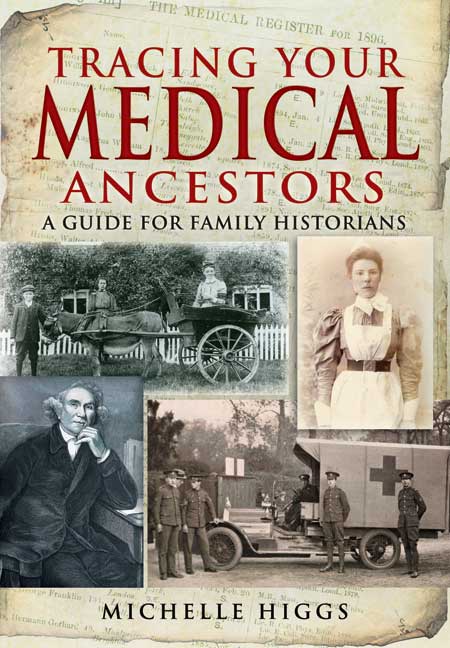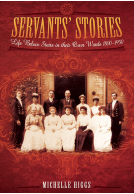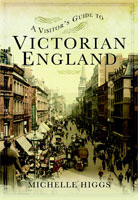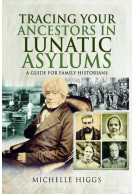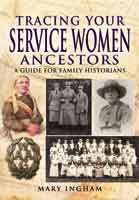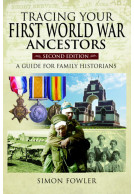Tracing Your Medical Ancestors (Paperback)
A Guide for Family Historians
Imprint: Pen & Sword Family History
Pages: 192
ISBN: 9781848842779
Published: 21st February 2011
(click here for international delivery rates)
Order within the next 5 hours, 1 minute to get your order processed the next working day!
Need a currency converter? Check XE.com for live rates
| Other formats available | Price |
|---|---|
| Tracing Your Medical Ancestors ePub (1.6 MB) Add to Basket | £6.99 |
The medical profession had as much influence on the lives of our ancestors as it does on our lives today. It occupied an extraordinary range of individuals - surgeons, doctors, nurses and specialists of all kinds. Yet, despite burgeoning interest in all aspects of history and ancestry, medicine has rarely been considered from the point of view of a family historian. This is the main purpose of Michelle Higgs’s accessible and authoritative introduction to the subject. rn Assuming the reader has little prior knowledge of how or where to look for such information, she traces the development of medical practice and patient care. She describes how attitudes to illnesses and disease have changed over time. In particular, she looks at the parts played in the system by doctors and nurses - at their role, training and places of work and she also looks at the patients and their experience of medicine in their day.'rn Each section identifies the archives and records that the family historian can turn to, and discusses other potential sources including the Internet. The book is an invaluable guide to all the information that can give an insight into the experience of an ancestor who worked in medicine or had a medical history.
Author article ‘Medical Officer Of Health Reports’ as featured by
WDYTYA? Magazine, February 2020
Author article 'Nurses' as featured by
WDYTYA? Magazine, August 2019
Author article part of the 'My ancestors was an...' feature as featured by
WDYTYA?, June 2018
Author article part of the Occupations feature 'A career in nursing ' as featured in
Discover Your Ancestors, issue 7
As referenced in part of author article on medical ancestors
WDYTYA? February 2018
Author article on Royal Navy medical journals as featured in
Your Family History, November 2017
As featured in the 'top sources' section part of Sara Read's author article 'My ancestor was a...Midwife'
WDYTYA? June 2017
As featured in 'Useful Sources' part of Chris Paton's author article on Scottish medical records
WDYTYA? Magazine, May 2017
As featured in part of author article
WDYTYA? Magazine, November 2016
As featured in part of author article
WDYTYA? Magazine, September 2016
Michelle Higgs' book is a useful guide tothe development of medical practice, covering not just doctors, but nurses and other medical professionals. An invaluable source of information on the archives and records for the family historian.
Your Family History July 2016
As featured in.
Your Family Tree Dec 15
The title of Higgs' book does less than justice to its contents. My first reaction was to wonder how many of us actually have medical ancestors: the answer turns out to be ‘quite a lot’, particularly if we include not just doctors, nurses and midwives but also people temporarily enrolled in caring for service personnel in two world wars. Higgs also includes details of how to track down the records of our ancestors who were cared for as patients, both in hospitals and workhouse infirmaries. Medical folk are, it seems, obsessive record keepers, a habit that benefits both those who want to learn about the history of medical practice as well as researchers keen to find out what their ancestors were doing. As such, Tracing your Medical Ancestors presents an account of the early history of the professions in their various branches.
Who DO You Think You Are Magazine, March 2011
The sources which readers are directed are numerous, and feature everything from the more obvious ones, such as workhouse records held by local authorities to some surprising entries including The Old Operating Theatre in St Thomas Street, London, and the library of the Order of St John in Clerkenwell.
The text is very well illustrated with suitable pictures and photographs throughout, and readers re helped along by case studies outlining the careers of various practitioners. A good read.
… medicine has rarely been considered from the point of view of a family historian. This is the main purpose of Michelle Higgs’ accessible and authoritative introduction to the subject ... The book is an invaluable guide to all the information that can give an insight in to the experience of an ancestor who worked in medicine or had a medical history
Kent Family History Society, Sept 2011
This new title fits firmly in the latter category and is probably the first of it's kind - a guidebook specifically about tracing ancestry connected to the wide range of medical professions.
Your Family Tree July 2011
A quick look through the index reveals just how wide that range is, and indeed how thorough writer and social historian Michelle Higgs has been in her research. Here, then, are anaesthetics, midwives, physiotherapists, police surgeons and many more professions. As the introduction explains, even if you fail to to track down your specific ancestor, this book will certainly help you find useful information to aid in understanding your forebear's daily working life.
A significant part of the book itself is dedicated to providing that context. The first section surveys 'the medical profession', meaning doctors, surgeons and apothecaries - mainly men, with women only formally acknowledged in such roles from the mid-19th century onwards. Higgs explains the different roles, how people were trained and what sort of establishments they worked in during their life. A second section on 'the nursing profession' provides a similar grounding in what was more traditionally the female side of the medical world.
A short third section also changes the perspective to describe the typical experiences of patients. The general focus of the book is from the 19th century onwards, simply because the Victorian era was so much better at record keeping.
Those records then form the focus of the books fourth and largest section. Here, Higgs provides snappy summaries of the many types of records left by the medical profession, including military medical officers and nurses, and everyone from district nurses to dentists. There's also a brief nod to where you can find information on patients.
Finally, we have a series of appendices, containing nursing terminology, useful contacts for further research and so on. The focus of the book on the whole is on offline records,m but plenty of web references are given throughout.
This book is an incredibly useful reference work, helpfully filling a gap in the market, which anyone with medical ancestors will find great for reference and for a general understanding of their lives.
Although directed towards readers with no previous knowledge of family history, this book is also highly accessible to more informed readers wishing to discover information about a family member who took on a medical career.
Family History Monthly, August 2011, Kath Garner
Divided in to four sections: medical, nursing, patients and sources, it outlines the history, working conditions, training and qualifications required for members of the medical and nursing fields, and sources available.
Archives and useful records are identifies, with the novice family historian carefully guided. Although this book is not intended as 'a definitive history of the medical profession,' it is a clear, comprehensive introduction. Interspersed with case studies, photographs and documents, this book clearly explains how to trace the careers of medical ancestors and even find patients' records.
Packed with information, it is an invaluable guide to the lives and experiences of any ancestors working within the medical field.
Tracing your Medical Ancestors takes the reader through four sections: the Medical and Nursing Professions, Patients and Sources. It includes a contextual discussion on the training, qualifications and role of professions, and the Acts of Parliament that enables the professional development of physicians, surgeons and nurses. Sources described include printed directories and registers.
British Association for Local History
When people trace their ancestors the may look for family members involved in war or the armed services however medicine has been cruelly overlooked. Tracing Your Medical Ancestors describes the development of medical practice and patient care and gives specific focus to illnesses and diseases that have changes over time. Other sections include analysing the roles of Doctors and nurses, their training and the patient's experience of medicine in their day which is followed by archives and records that the family historian can use in conjunction with the internet or on its own. The book flows through interesting chapters comprised of fluent and educational prose which is reinforced by amazing images such as a girl in callipers learning to walk in the 1930's. Being the previous author of three books aimed at family historians, Michelle Higgs uses her experience in history and heritage to create book that is interesting and informative until the very last word.
John (Customer Review)
This new book from Discover My Past contributer Michelle Higgs is a through research guide for all things medical, whether you wish to look for a doctor ancestor, someone in the nursing profession or even the medical histories of your ancestors.
Discover My Past Scotland
The book is split into four main sections, plus appendices. The first explored the background to and evolution of the profession, including details on how those worked in the area actually trained, and the qualifications they needed, before examining the sheer range of places where a medical ancestor may have worked, from the British Army to the former colonies. The second section then concentrates specifically on the nursing profession and its development, whilst the third section looks briefly at patient care from the patient's point of view. The final area of the book looks at those all important sources including directories, the Royal Colleges, military records and more. The handy appendices include guides to nursing terminology, useful contacts and medical qualifications.
A truly impressive guide, and an essential for your genealogical library is you have practitioners in the tree.
A newly published book should prove an invaluable guide to genealogists studying the various medical and medical-related professions...and the BOA Museum has been pleased to help the author with regard to the section on optical professions. Michelle Higgs' handy little volume 'Tracing Your Medical Ancestors - A Guide for Family Historians' covers the medical profession, nursing profession, patients (an often neglected area of study) and advises on the sources for all of these including 'Other Medical Professions' which for the purposes of this book includes optometrists and opticians. It is in the nature of these books that they can become out of date almost as soon as they are written. For example the BOA Museum has recently acquired some more membership registers that had been lying undiscovered in the College basement and we remain hopeful that more such discoveries may yet await us. Nevertheless, as an introductory guide we can recommend this book and we hope that the exposure given within it to our archival records will encourage more such researchers to get in touch.
The College of Optometrists
In recent years, family historians have welcomed many books on sources for tracing a variety of trades and professions: occupations as diverse as agricultural labourers, lawyers, soldiers, textile workers, clergymen, and servants, have all been considered. Until now, however, the only guidance to the Records of the medical professions has been a small pamphlet of that title by Susan Bourne and Andrew Chicken, published in 1994.
FFHS
This obvious gap in the literature has now been competently filled by Michelle Higgs. She begins by tracing the history of medics, and showing how a variety of different specialisms have developed. Nursing history is also outlined, together with brief notes on patients. The author disclaims any intention of producing the definitive history, but she does provide the basic information that the family historian needs to know.
For the researcher, however, the most useful feature of the book is the detailed guide to sources. And what a range of sources there are! All the well-known sources, such as the Medical register and Munk's Roll of the Royal College of Physicians of London are discussed. But so are such obscure sources as the national roll of the Queen's Nursing Institute, and the records of the Association of Anaesthetists of Great Britain. There is a wealth of information here that offers many potential leads to the researcher.
The author is to be congratulated on producing a workmanlike text which ought to be consulted by everyone tracing medical ancestors.
You may have a great grandfather who was a country doctor or an ancestor who was a surgeon in the royal navy in the 1700's but where do you begin. That's the wonderful thing about genealogy it has so many surprises in store for us, some enlightening some downright shocking that chills us to the bone. The sawbones was chillingly necessary if you were going to carry on breathing in a time of medical uncertainty and little in the way of anesthesia was available. The doctor did have a pretty powerful herbal apothecary at his disposal however to alleviate pain in medical emergencies. Michelle Higgs, the author of four social history books, shows us in depth how to research our medical ancestors. Each section identifies the archives and records including Internet we family historians can turn to when we are in a proverbial dead end, hence a light in the tunnel shines and our personal histories are revealed. Anyone who has unearthed a medical link in their ancestry really needs this book as a valuable direction in this field. It contains a detailed history of medicine and the developments to the present day .It is indeed a comprehensive introduction to researching medical history and for some of us leads on to the fascinating world of the apothecary and the power of plants and herbs in healing. It also makes us realize the skills of our surgeons today are inextricably linked with these magnificent pioneers of medicine.
Susan (Customer Review)
Usually for family historians the purpose of their research is to discover their families ancestry, but a subject that is rarely considered for family historians to research is their medical ancestry, which has had a great influence on our lives today as it did our ancestors. Michelle Higg's book traces the development of the medical practice and patient care and describes how attitudes to illnesses have changed. Higg's has written a number of books on social history and has written for the BBC Who Do You Think You Are? magazine.
Sue (customer review)







